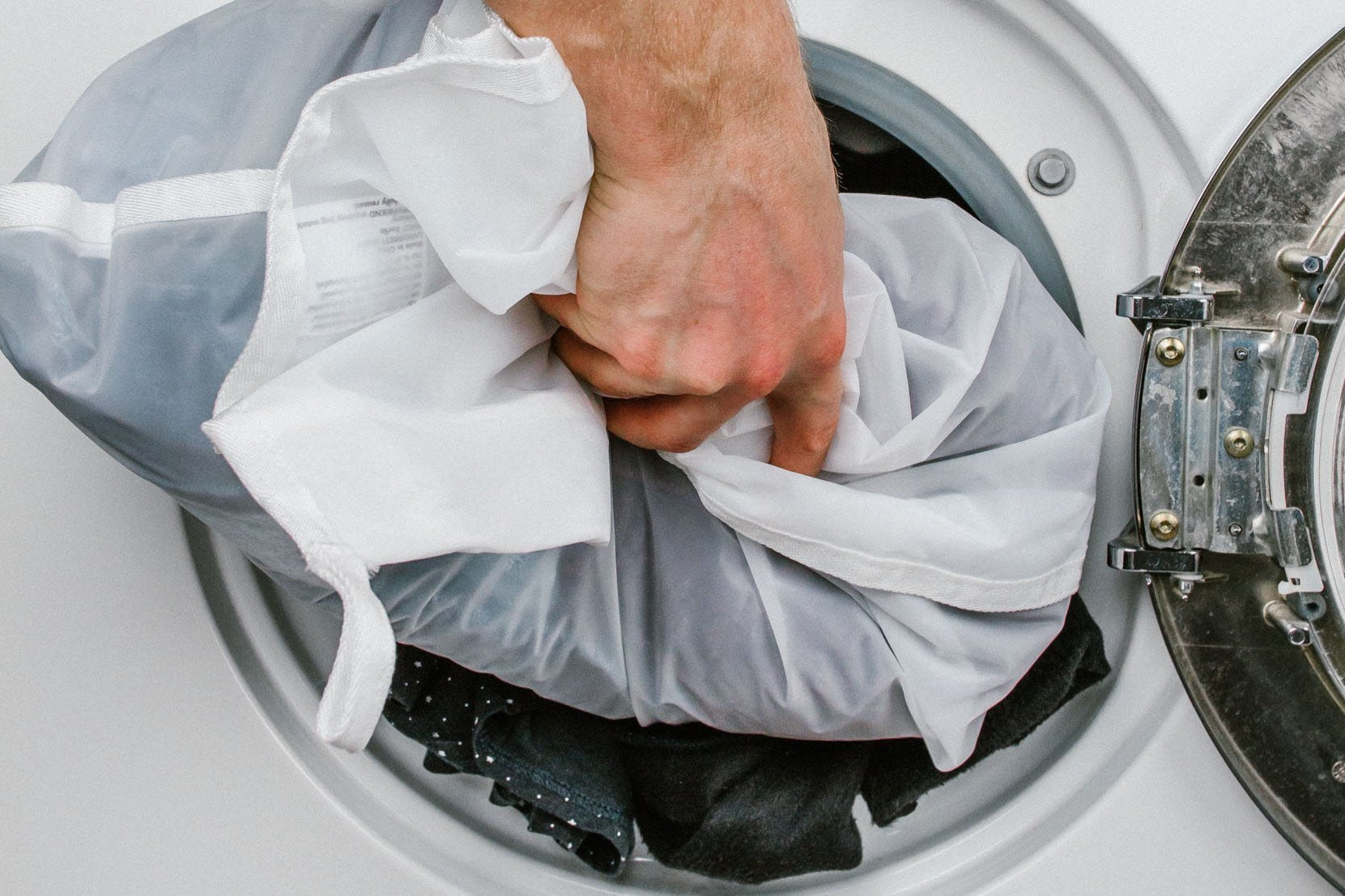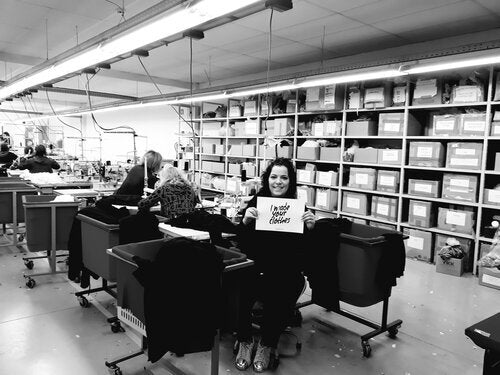Your Cart is Empty
Free UK Shipping on orders over £100
Free UK Shipping on orders over £100
Free UK Shipping on orders over £100
Free UK Shipping on orders over £100
August 28, 2020 5 min read

Image by Tom Fisk
Sustainability feels like a trending topic right now and many of us are trying to make more conscious choices to shop sustainably, but navigating the eco landscape can be a daunting task, especially with marketing hype and greenwashing by many of the large brands all adding to the confusion. The fashion industry employs 1 in 6 workers globally and is the third most polluting industry in the world, producing more CO2 emissions than aviation and shipping combined. So, if you want to do something about your impact on the planet, then paying a little attention to the clothes you wear and where they come from is a great place to start.
There are many layers that make up the impact of clothing: the chemicals used to fertilise the crops, the water resources used, and where the fabric is sourced and manufactured. In the first of our series of articles on sustainability, we’ll start with a rundown of what factors to consider when making buying choices and a few simple tips that can make a huge difference to the planet when caring for your clothes.
The number one thing we can do is buy less
With the average garment today only being worn seven times and most likely destined for landfill or incineration, the easiest way to make a positive impact is to consume less. Extending the life of our clothes can make a huge difference to the environmental impact, so look for quality over quantity and buy clothing that’s made to last. Look for timeless styles and versatile clothing rather than throwaway fast fashion, repairing clothing rather than replacing, and consider buying second hand.
What are your clothes made from?
There are a wide array of natural and manmade fabrics available that require different levels of energy, water, land usage and chemical processes. The Made-By Environmental Benchmark for Fibres weighs up the impact of these factors for some commonly used fibres, making it a bit easier to compare.

Conventional cotton typically uses a large amount of pesticides and is a very thirsty fibre, requiring 2,700 litres of water to produce 1 t-shirt. Organic cotton, on the other hand, is grown without harmful chemicals and produces around 46% less CO2e, so scores much better. Recycled materials require much less energy, land and water than manufacturing from scratch, so receive a better rating than their conventional counterparts.
Where your clothing is made
It’s important to look at where your clothes are made. Transportation accounts for a significant part of the environmental impact of clothing so shopping for clothing produced as locally as possible will minimise the impact. Sadly there isn’t as much manufacturing in the UK as there once was, especially for specialist performance clothing (we’ve looked), but there is plenty of great clothing produced in Europe.
Different countries have varying working conditions and ethical considerations, but this can be more complicated to unravel as there are fantastic companies with great conditions in countries known for bad practices and there are sweatshops flouting the rules in the UK. One way to glean a brand’s ethical stance is to look at how transparent the company is and if they are open and talking about their manufacturing. If a brand is not talking about it, it’s very likely that they don’t think their customers care and if they don’t think their customers care, then they probably won’t care either.

Images from our partner factories for Fashion Revolutions Who Made Your Clothes campaign

Use of harmful chemicals
Around 8,000 synthetic chemicals are used in the fashion, textile and footwear industry for growing crops, dying fabrics and for things like water resistant coatings. Some of these can be harmful to workers and can cause environmental issues if they make their way into water systems. There are often less harmful alternative practices such as natural dyes having adequate effluent treatment systems. It’s best to look out for brands that are taking these things into account in their manufacturing. Third party certification standards such as the Global Organic Textile Standard (GOTS), Oeko-Tex® Standard 100, Bluesign® can demonstrate to consumers that clothing has been made according to strong environmental values.
Caring for your clothes
Studies show that washing and caring for garments stand for up to two thirds of the environmental footprint of a garment, so what you do with your clothing really matters. Simply air-drying a t-shirt can save a third of its carbon footprint and washing at a lower temperature also reduces the impact. Washing clothes less will not only reduce the energy and water usage but will extend the life of clothing. Also, in order to avoid washing clothes so frequently, look for products with anti-odour, silver technology treatments like Polygiene or naturally antibacterial fibres like merino and kapok. At Meander, we use Polygiene anti odour technology across our entire t-shirt and sweatshirt range which works by eliminating the bacteria. As sweat, heat and humidity is nourishment for bacteria which will grow and die in ever-increasing numbers, this treatment simply makes it impossible for them to multiply. The result? It stops the odour at the source to keep your items fresh, and it works for the lifetime of the garment.
What to do with garments at the end of life
We recommend prolonging life and repairing garments that have the odd rip or snag. At Meander we offer a repairs service on all our garments so the odd snag or tear can easily be repaired and look almost as good as new. However, if your clothes are still in good condition but not for you any longer, the best thing to do is to sell or donate them, as this can extend their functional life and prevent the need for more manufacturing. Anything that is too far gone should be recycled, where it can be turned into anything from new clothing to insulation material. Most big supermarkets have textile recycling banks in their car parks, or you could check to see if your council collects clothes and textiles to be recycled.
Microfibres
It’s estimated that more than 60% of clothing is made from plastics like polyester, nylon, acrylic and polyamide. These fabrics can shed microfibres thinner than human hair that end up in our ecosystem and have been found in rivers, soil, drinking water, seafood, and even beer. These tiny bits of plastic can be harmful to marine life and there is also a risk that the plastics can absorb chemicals from processing that may be toxic.
Fleece-like fabrics are thought to be one of the worst shedders of microfibres due to their construction, so seeking out natural fleeces and alternative insulation layers can help with the problem. When washing clothing with synthetic fibres, using a lower temperature and air drying rather than tumble drying will result in less shedding. You can also buy specialist washing bags like the fantastic Guppyfriend Bag which collect these fibres when they are shed, allowing you to dispose of them safely.

Guppyfriend bag and collected fibres

If you want to read a bit more about our founder Steve’s passion for sustainability and what inspires us to do the best we can for the environment at Meander, you can read about that here.
Comments will be approved before showing up.
